At a nature school near the capital, Ashton Wilcox points to a porcupine carcass stuck between rocks in a stream.
"Look, there's something inside the hedgehog," the 8-year-old student exclaimed when he saw the maggot-infested animal. A teacher approached and warned Wilcox not to touch the hedgehog, explaining that it was a pest in New Zealand and that the animal's body was decomposing.
Wilcox watched curiously for a while longer, before returning across the stream with his classmates to feed a school of eels.
Within two minutes at this special nature school on Battle Hill, a farm not far north of Wellington, New Zealand's capital, Wilcox had learned about conservation, safety in nature and the life cycle of living things.
Wilcox is a student at Bush Sprouts Nature School, one of a growing number of such schools in New Zealand. Here, students aged four to 12 travel to Battle Hill Farm every week to spend their days playing in the mud, building bonfires, feeding eels, planting trees and trapping pests.
In the morning, the students gather in a log cabin and set goals for the day. “I want to go to the swamp and look for crayfish,” says a 6-year-old. “I want to eat pancakes,” adds a 9-year-old. “And I don’t want to do anything,” replies a 5-year-old across the table. Every wish is granted.
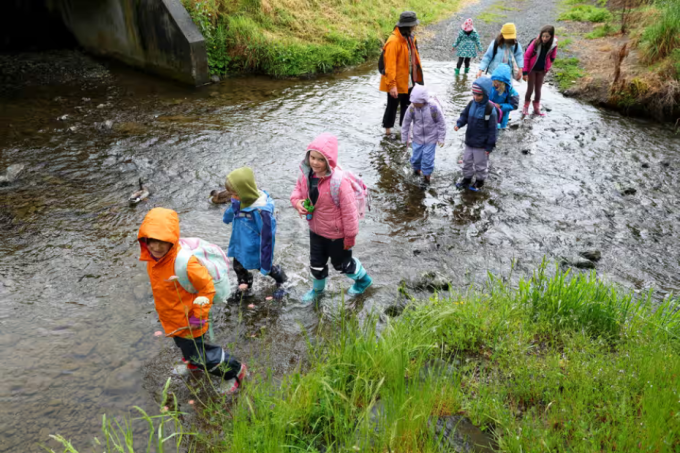
Bush Sprouts students and teachers cross a stream. Photo: Guardian
Elements of a traditional classroom are set aside, these lessons are more about self-learning and fun.
“The classes are focused on what kids want,” says Leo Smith, founder of Bush Sprouts. She encourages kids to challenge themselves in an outdoor environment, believing that without the opportunity to experience risk, kids won’t learn to take other risks in life.
"Many families send their children to this school because they have not had time to experience and are shy with nature. They know that by studying here, the children will have the opportunity to express themselves," Ms. Smith added.
Nature schools, also known as forest schools, are gaining popularity in many countries, including New Zealand, the UK and Australia, inspired by the outdoor culture of Northern Europe. New Zealand now has more than 80 similar schools nationwide, creating a community of about 2,000educators .
Advocates of nature education believe that time spent learning and playing outdoors, in all weather conditions, is one of the best ways to promote health, resilience and creativity in young children.
Research also supports this argument, providing evidence that students in nature schools experience increased motivation, social skills, and improved academic performance.
Educators like Smith are incorporating traditional knowledge from New Zealand's indigenous Maori people into their farming, conservation and environmental guidance.
"Children in this country have a right to understand the ecosystems in which they live. This method of learning can help children develop environmental awareness and responsibility," said Jenny Ritchie, professor of education at Victoria University of Wellington.
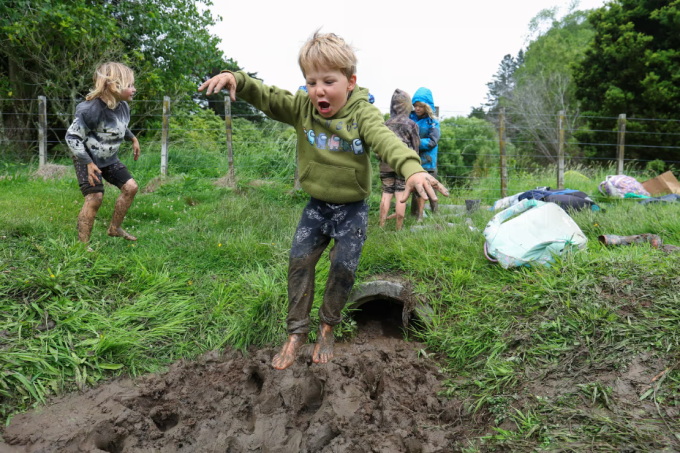
Bush Sprouts students play at Battle Hill farm, on the outskirts of Wellington, New Zealand's capital. Photo: Guardian
This was partly reflected in the reaction of Bush Sprouts students when 20 tī kōuka (a New Zealand asparagus species that grows up to 20 metres tall) were recently felled by vandals. “The kids cried and decided to replant some of the trees,” says Smith. “When they were done, the seedlings were vandalised, but they were undaunted and planted new ones. It was all their own initiative, we didn’t suggest it.”
Emma Dewson takes her two children to “school” every week, in an effort to recreate her own childhood close to nature. She recognises the great responsibility they have for the environment in the future.
“They are willing to go around the streets picking up trash. They are the next caretakers of the planet,” Dewson said.
Six-year-old Reid Payne splashes around in the mud, his face dirty but beaming. Reid's mother, Amy Toomath, said: "He's always excited and he doesn't like to sit still, like a ball bouncing off a wall, so we took the walls down."
While their friends frolicked in the mud, Evie-Willow and Zelia played house, mixing pots of pretend food made from mud and plants in front of the campfire. When asked if they looked forward to their weekly lesson, they both answered in unison: "Yes."
"This is a good place for us to relax and get our minds off things. It's great to have fun," said Evie-Willow, 10.
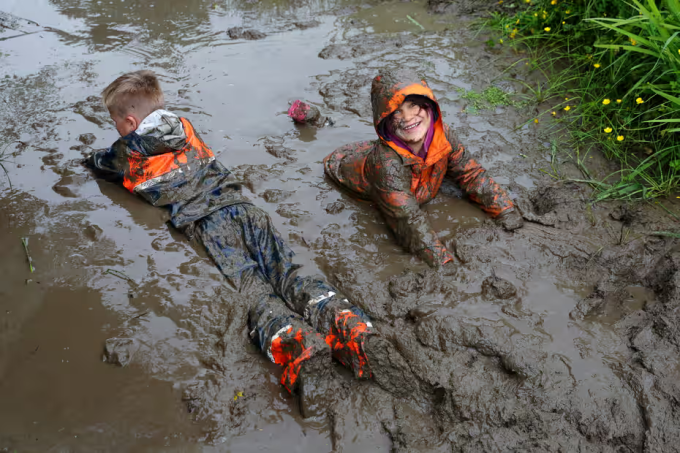
Two children playing in the mud. Photo: Guardian
Duc Trung (According to Guardian, AFP )
Source link






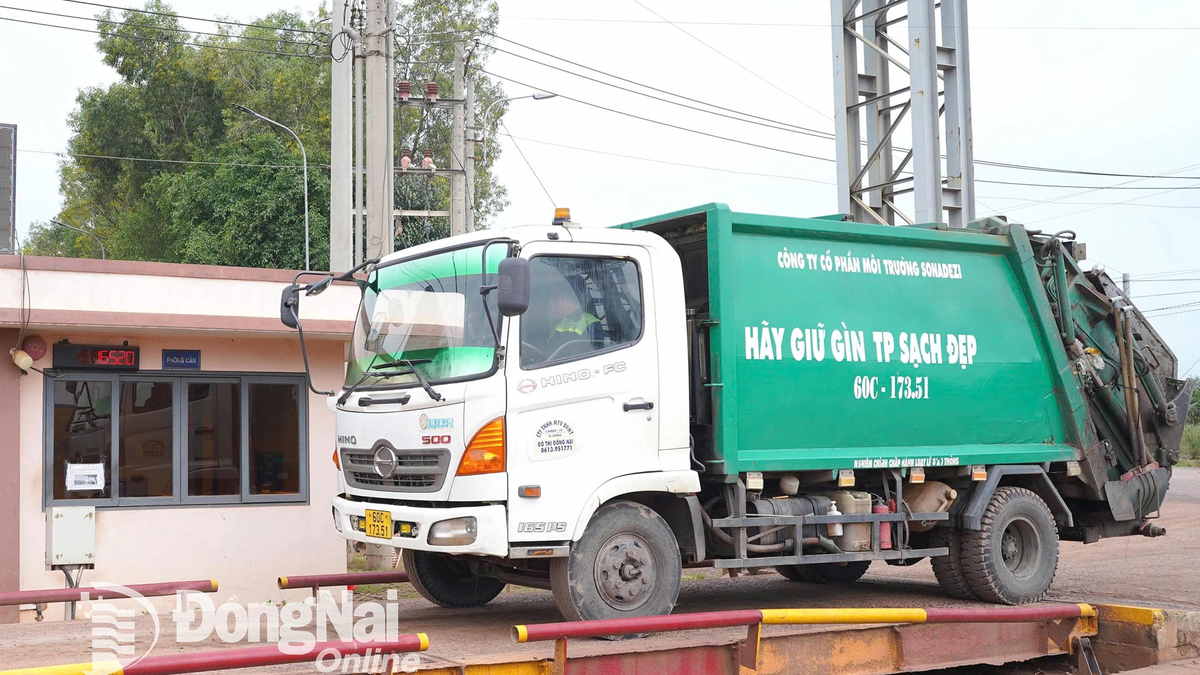

























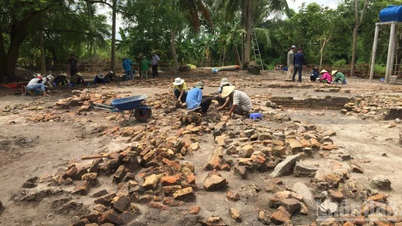



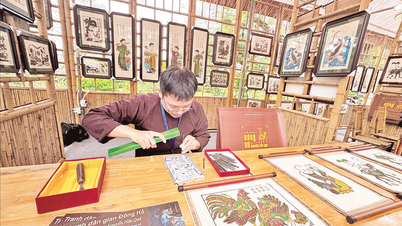
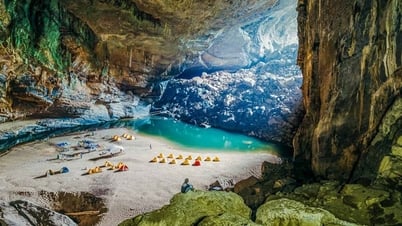

























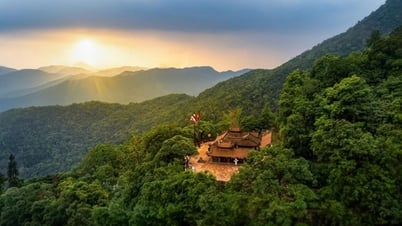























![[Infographic] In 2025, 47 products will achieve national OCOP](https://vphoto.vietnam.vn/thumb/402x226/vietnam/resource/IMAGE/2025/7/16/5d672398b0744db3ab920e05db8e5b7d)














Comment (0)